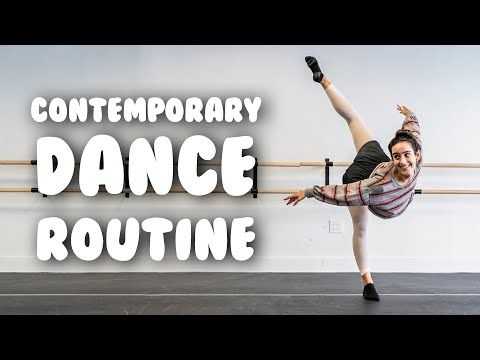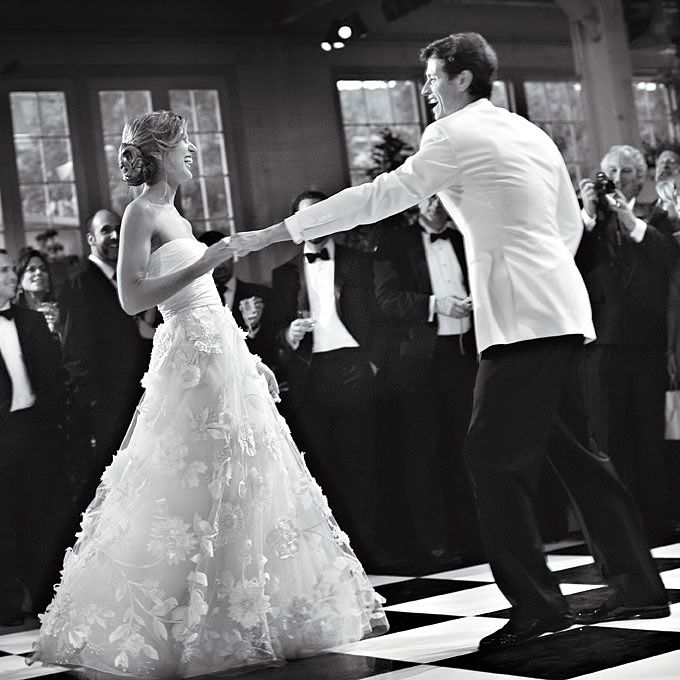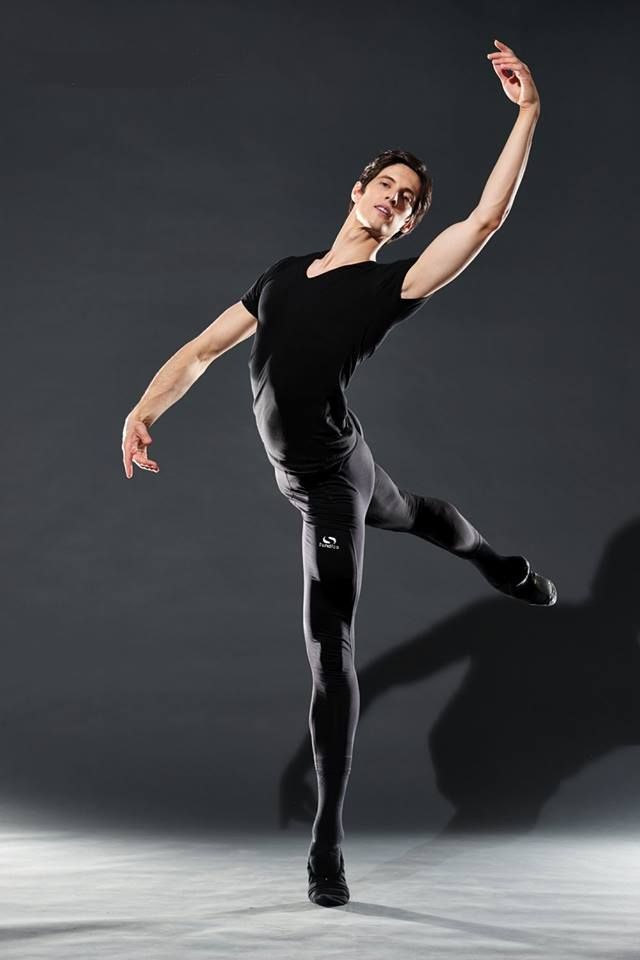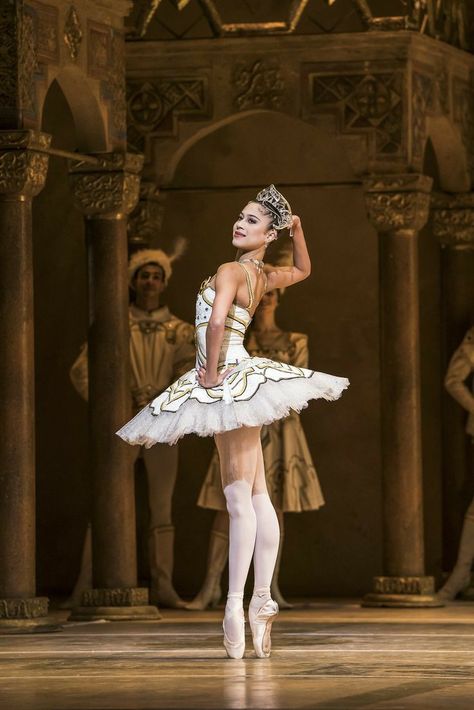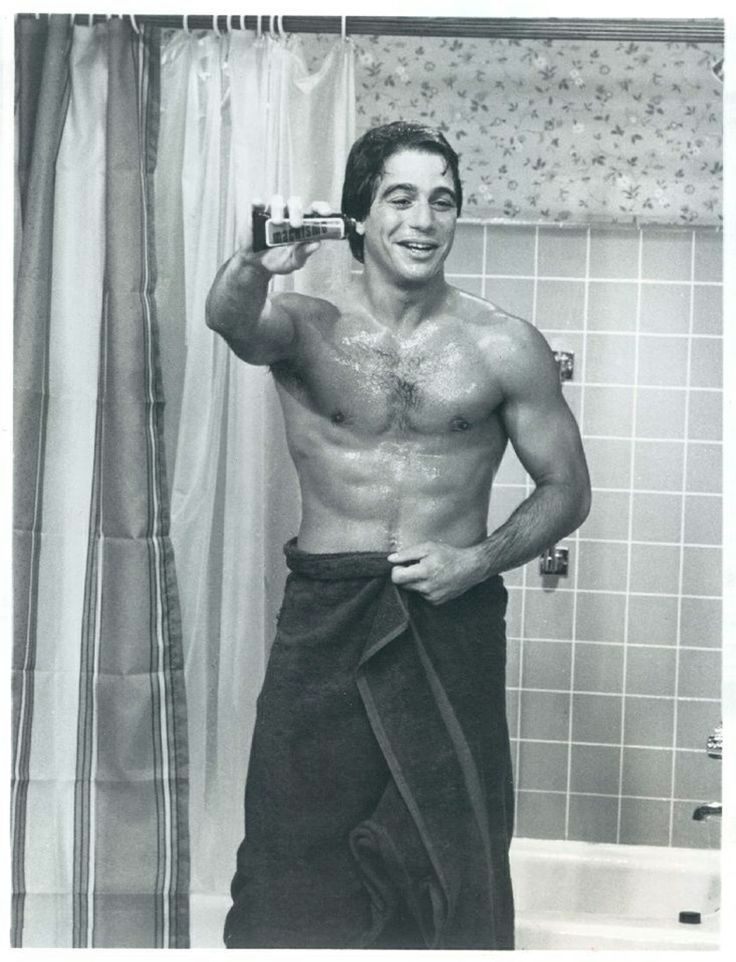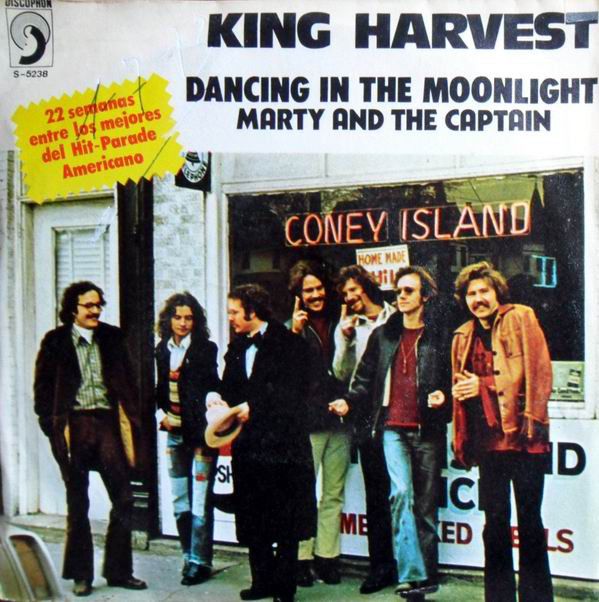How to dance lyrical for beginners
1000 Years Lyrical Dance Tutorial & Routine
Learn a beginners lyrical dance with Hannah in this step by step tutorial to 1000 years (one thousand years) by Christina Perri. Some of you may recognise this song from the Twilight: Breaking Dawn movie. The lyrics are beautiful and perfect for a lyrical dance piece so she choreographed a new lyrical dance to this song. In one video Hannah shows you the full routine to music in one video, in another video she breaks down the individual steps with counts and lyrics to guide and walk through the dance routine step by step to help you learn the routine from the comfort of your own home.
The piece includes different dance movements that include turns on demi-pointe, gentle walks, flowing arm movements, floor work, a small backbend and more. Practice your flow and musicality with guidance from Hannah from Stardust Dance Academy, Cambridge.
Learn a new Lyrical Dance in these videos!
- Lyrical Dance Choreography Routine to "One Thousand Years" (1000 years) - https://youtu.
be/-83TSwoRdjY
- Lyrical Dance Tutorial and step-by-step walkthrough to "One Thousand Years" (1000 years) - https://youtu.be/iyOhKu2ZBqs
Routine Description:
Watch a demonstration of Hannah's Lyrical dance choreography routine to 1000 Years song by Christina Perri. Easy lyrical dance choreography online to learn at home for beginners & experienced dancers.
Tutorial Description:
Learn a beginner lyrical dance with me in this step by step tutorial. This lyrical dance routine has floor work, turns, and extensions. Practice your extentions and musicality too!
Difficulty / Level
This lyrical dance routine was designed to be adaptable for beginners and intermediate skilled dancers. Hannah advises of variations in the tutorial video to challenge any more intermediate dancers learning the routine to push themselves further.
Stardust on Social Media
Lyrical Dance Clips
Short for time but still want to see the routine? You'll find a clip of it at:
- TikTok Lyrical- https://www.
 tiktok.com/@stardustdanceacademy/video/6954857297407511814
tiktok.com/@stardustdanceacademy/video/6954857297407511814 - Instagram Reels Lyrical- https://www.instagram.com/p/COFfyB7F-wf/
- Pinterest Lyrical - https://pin.it/u9yV7ns
- YouTube #Shorts Lyrical - https://youtu.be/9P8tcJp-eXE
Transcript of 1000 Years Lyrical Dance Choreography Video:
Welcome back to the channel everyone! If you've not been here before, I'm Hannah from Stardust Dance Academy, Cambridge. I'm going to show you my beginner's lyrical choreography to Christina Perri's song (1000 years) a thousand years if you enjoy it and you want to learn this dance i've made a separate video which i've linked down below where i break down the steps, step by step for you. I hope you enjoy! [1000 years by Christina Perri music begins...]
[Song Starts - Lyrics]
Heart beats fast Colors and promises.
How to be brave?
How can I love when I'm afraid to fall?
But watching you stand alone.
All of my doubt suddenly goes away somehow.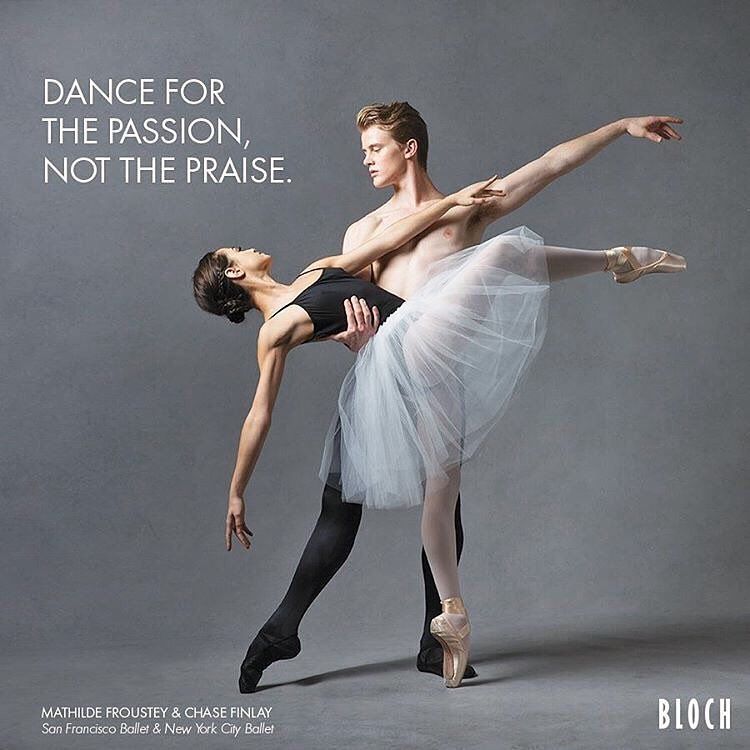
One step closer.
I have died every day waiting for you.
Darling, don't be afraid
I have loved you for a thousand years
I'll love you for a thousand more
[End of Song - Lyrics]
Thanks so much for watching everybody! I really hope you enjoyed that dance. If you want to learn the choreography i've made that separate video for you which i've linked down below in the comments and if you've got any other ideas of songs that you would like me to choreograph to drop me a message or drop a comment below you can connect with me on Instagram over @stardustdanceacademy and there are loads of other videos on this channel by me and some of the other Stardust teachers which i really hope you'll check out hope see you soon
Transcript of 1000 Years Lyrical Dance Tutorial Video:
Welcome back to the channel everybody, It's Hannah from Stardust Dance Academy, Cambridge. Thanks for joining me for this (dance) tutorial.I'm going to break down the dance step by step for you so you can follow (and dance) along. Then when you're ready you can check out the link below, which is to the music video which accompanies this (lyrical) dance (1000 Years by Christina Perri). I have loved making this video for you and I really hope you enjoy learning my dance. Let's get started.
[Tutorial Starts]
We're gonna start with our feet together, arms by our side. We start by holding our head in a dropped position, we're going to hold this position and then on the "and a" before count one our feet again aboard, change out and good then your hand is going to come out and you've got a little ripple like a burst out of your heart so it goes and or one good and then your other hand too and you're going to look at your fingers bring this hand into your heart then you're going to spin up on your toes 3. So, upon Demi pointes, good another little step forward and and this time you're going to completely relapse.So drop your head, drop your arms right forwards, good from the top 678 and 01234 and five good. You're going to bring this arm up six and then the other ones 7. And then we're going to turn lift your back heel and then push. Good for your front leg is strict and the back foot is up on Demi Point lovely. We're then going to rise up onto Demi points and our arms are going to go round the back of our head so we go up and step good pool and look at the hand. Same on the other side. Pole look at your hand and then you're going to take another step and do a windmill to finish down on one knee. Lovely, so let's recap that from the beginning, feet together 678 and 01. 234 and 567 per shaped an up an for an step threat. Nice windmill over and damn good. You're then gonna roll your front shoulder, roll it back and turn to look at your audience. Lovely, we're then going to stretch our leg rich and I want you to look up to the ceiling. Nice big stretch and make sure your foot is stretched. Get and this is on the lyrics, afraid to and then on the lyric fall, we're going to fall down.
So you sit down, hands, touch the floor, head goes down. Great. we're then going to roll, so stretch those feet, roll step onto your back foot and then take another step with your front foot. Good job from here. We're going to do a half a turn which is instigated with our back shoulder, so you're going to roll half a turn to face the other side. We're then going to step. You can either do this on a flat foot, or you can take it upon to Demi-pointe. We're going to circle the arms back and we're going to lift up into a parallel ratiré a step up and drop. Good, then we're going to reach your front hand forwards, and then it's our elbow that's going to instigate our turn this time. So we're going to have a nice strong elbow and it's going to turn around and then reach. Good nice work everyone. Let's see if we can add it all together from the beginning before I do the next little bit with you. So, feet together had relaxed hold 678 and 01. 234 and 567 per shaped and one and two pull. 34 Windmill, 5-6 head and shoulder.
7 reach 8 falling. What role to Step 3 for back shoulder roll ripple up and drop front arm elbow turn rich good so. After that turn, when you reach, you're going to bring your front hand into your heart and really stretch that back on beautiful. From here we're going to do a lovely swing, so again, you're going to bend your knees, relax forward, swing an up an rich and again so you're here. Relax the head, swing on, then reach that front arm. Good win then going to pull their arms slowly in and we're going to take 2 steps starting with our right foot going round in a circle with the lovely stretched feet. So we go, walk, walk so we finish facing the back. We're then going to take a lovely turn up on our toes and our hands are going to go up the side of our body as we turn. You can either do one or two or three however many times you want to do. If you love turning over as many as you can, so we've just done our two walks. Walk, walk. We're going to step on our right foot and arms go up.
Our body good, and then we're going to step out of it, and as we do that, we slowly open and push down with our arms. Good nice everyone. From here we're going to do a big step back, and we're going to switch off front foot back into our best with a nice stretched foot. Don't worry how high it goes, just give it your best shot. We're going to make this a hop, so as we swish, swish pop, we're going to hop on that underneath foot, stretching our arms into a gorgeous first arabesque. So see your leg forward and again, so we've just done that turn and we go step up. Good, and then we're going to turn arms in Jazz first turn up on your toes and then slide. Beautiful so we finish facing our corner. We're then going to do a little back ripple backwards so if you've got a really flexible back you can go for a nice backbend. If not you can just circle those arms, keep that foot stretched so we go circle here good. You're then going to step straight up onto Demi Point and we're going to stretch those arms and see if you can stay up on Demi point for a moment.
So we're going to go stretch. And then out good. And then you're going to keep this arm up and we're going to do a pirouette, so we're going to turn towards our back foot and we're going to lift it up. And this arms going around our head. So we're here we're going to go up and step out of it. Good nice job everyone. Let's see if we can do it from the beginning. All of that together. We've not got too much more to do, so we hold head dropped 678 and one. Tip 3 four and five. 6-7 per Shake going up and full. Pull back, but windmill over and down shoulder roll. Stretch and drop. Roll it round two steps to come up up back shoulder roll body ripple up and four front arm stretch Elbow turn rich. Swing it forward. Swing up two walks one. Two here comes your turns up as many as you want. Remember an open. Here's our big step hop step hop step. Turn slide and back going up and turn rich awesome. Good job. So we're here. Remember if you want to rewind and go over any bits at any point if you can.
If not, we're going to carry on 'cause I've nearly finished here. We're going to slide. Make sure you're stretching those totes. Get tucked the foot behind and nice and slow. This arm is going to float up good and then you're going to rise up and turn. And then the arm Palm is now facing you and it floats down. This side step in front we turned out here. This time it just goes up and down and then I want you to look forwards as you turn and then you're going to take two walks with gorgeous stretch feet. Or if you can fit four walks in, go for walks. But I've not got space so do as many books as you can to the back two or four and then it goes straight into the second verse, which if you want to repeat this choreography you can. Or if you want to make up your own, you can do that too. So let's try the whole thing from the beginning, one last time with counts and me talking you through it and then remember when you're ready to do it with music. That music video is in the comments below for you.
So feet together hold nice and still 678 hour one cheap turned 3 drop forwards an release up. Uh, push lift that back heel up on demi-pointe up and drop going back three. For Windmill 5-6 shoulder 7-8 dropping what role tip up 3/4. Shoulder 5-6 and 7/8 elbow. To turn 1. Reach to swing three. An for two walks. Walk, walk and turn arms up your body step step slowly bring it down ready step up. Step turn slide. Reach an up turn pohled and slowly up turn down. Remembers turn out your legs up. Down, keep looking forward as you rise up two steps, walk, walk. Good! well done everyone.
[Tutorial Ends]
Thanks for dancing with me everybody. I really hope you've enjoyed it. Don't forget to check out the music video so You Can Dance that Lyrical choreography as many times as you like with the music. If you enjoyed it, please drop me a comment below. You can also connect with me over on Instagram at Stardust Dance Academy. If you've got any little videos of you doing this lyrical choreography, I would love it if you shared it with me.Thanks again for joining me and I hope to see you back here soon. Bye everyone!
August 7, 2022
Beginner Lyrical Dance - Online Tutorial Videos
Skip to contentGet 15 Dance Tutorials ($150 value), FREE!
Beginner Lyrical DanceLindsey Fadner
Instantly access ADTC beginner lyrical dance combinations online for just $89.99! You’ll get 12 beginner lyrical dance routines, complete with a walk-through tutorial of the dance steps by each ADTC choreographer.
$89.99 – BUY NOW
Included Beginner Lyrical Dance Tutorials:
Virtual Dance Classes – All Styles
Get Over $150 Worth of Dance Tutorial Videos,
absolutely freeInstantly access our exclusive collection of 15 dance tutorials, all styles/levelsEach 1-hr class features a warm-up, technique + fresh choreography with our world-class dance teachers.
GET MY FREE CLASSES
Individual Beginner Lyrical Dance Routines (w/ Tutorial)
Beginner Lyrical Dance Choreographers
Corinne de Beer
Corinne is from South Africa. She is classically trained in ballet, jazz, hip hop, modern and contemporary, and also well-versed in African, African Gumboot Dancing, African Pantsula, Broadway, Disco, Fusion and Street Dance. Corinne has choreographed for SYTYCD South Africa, as well as South Africa’s most watched TV show, “South African Idols.” She was recently a featured dancer in the movie Step Up 3.
Jayme Wappel
Jayme is a proud North Carolina native. She began dancing at CC & Company in Raleigh, NC. She has a dance degree from Point Park University, and currently teaches master classes throughout NYC & the Tri-State area. Jayme’s professional credits include the National Tour of Finding Neverland! This is Jayme’s 8th year at ADTC & 3rd summer as Director in North Carolina & Wisconsin.
Angela Harriell
A graduate of Fredonia University, where she received The Graduate Scholarship for ballet, Angela has danced with Elisa Monte and David Brown dance, Randy James Danceworks, Brooklyn Ballet, Opera Francais De New York, The Box, and was a professor teaching ballet at Binghamton University. Angela has created and directed four original Off Broadway productions, and has choreographed multiple musicals, music videos and industrials. Recently, Angela set the choreography for one of the shows on Virgin Atlantic’s brand new ship, Virgin Voyages.
Alli Gallant
Alli grew up dancing in Ipswich, MA. After competing her whole life, she moved to New York City to participate in the Broadway Dance Center’s professional semester. She currently teaches 15 hours/week at a competitive studio in New Jersey. This is Alli’s fourteenth year associated with American Dance Training Camps (she attended our Stratton, Vermont camp for seven years as a camper before joining our staff). She’s currently Assistant Program Director in Vermont.
She’s currently Assistant Program Director in Vermont.
Beginner Lyrical Dance Routines
Let the dancing begin! Watch beginner lyrical dance combinations performed at American Dance Training Camps’ overnight dance camps nationwide – subscribe to our Free To Dance YouTube Channel for more beginner lyrical dance videos!
Need More Beginner Lyrical Dance Choreography?
Whether you’re a dancer or teacher, we know it’s not easy to stay creatively inspired when it comes to dance routines. Our dance video library and amazing network of beginner lyrical dance choreographers can keep you motivated & moving all year long!
Custom Choreography
Purchase custom dance choreography from the ADTC Choreographer of your choice, delivered via private video. Get a dance routine you love, or your money back! MORE INFO >>
DanceADTC TV
World-class dance teachers & choreographers from ADTC’s camps come to your home! DanceADTC TV offers exclusive dance tutorials & courses to help you stay inspired & connected.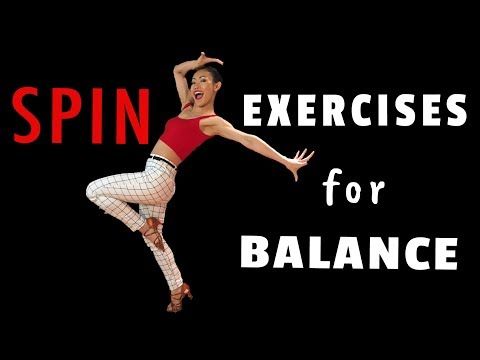 MORE INFO >>
MORE INFO >>
Private Online Classes
Grow as a dancer with 1-on-1 online private dance classes from home! Schedule sessions whenever you want, 7 days a week. Try a single class or save with a 5-Class Pack! MORE INFO >>
Just Some of Our Amazing Beginner Lyrical Dance Choreographers
Our top-notch beginner lyrical dance teachers offer the coolest combinations from some of the best national and international dance studios, schools and performance groups! They are MTV performers, Broadway dancers and contestants from your favorite dance TV shows.
Jayme Wappel
New York, NY
Ballet, Broadway, Contemporary, Jazz, Lyrical, Tap
Ashley Peter
Brooklyn, NY
Ballet, Broadway, Contemporary, Hip Hop, Jazz, Lyrical, Tap
Ellen Mihalick
New York, NY
Ballet, Contemporary, Jazz, Lyrical, Tap
Alli Gallant
New York, NY
Ballet, Contemporary, Hip Hop, Jazz, Lyrical
Eileen Boyle
New York, NY
Ballet, Contemporary, Hip Hop, Jazz, Lyrical
Katelyn Martin
Los Angeles, CA
Ballet, Contemporary, Hip Hop, Jazz, Lyrical
CJ Johnson
New York, NY
Ballet, Contemporary, Hip Hop, Jazz, Lyrical
Delight Moore
Atlanta, GA
Ballet, Contemporary, Hip Hop, Jazz, Lyrical
Kierstyn Sharrow
New York, NY
Ballet, Broadway, Contemporary, Jazz, Lyrical
Joanne Liebenberg
New York, NY
Contemporary, Lyrical, Jazz, Ballet
Sophia Michitson
New York, NY
Contemporary, Hip Hop, Ballet, Lyrical, Jazz
Erica Messonnier
New York, NY
Ballet, Broadway, Contemporary, Jazz, Lyrical
Rachel Martens
Chicago, IL
Ballet, Broadway, Contemporary, Jazz, Lyrical, Tap
Ashley Sartell
Los Angeles, CA
Jazz, Lyrical, Contemporary, Lyrical, Hip Hop, Ballet, Tap
Gina Daugherty
New York, NY
Ballet, Broadway, Contemporary, Jazz, Lyrical, Tap
Lauren Goodman
Dayton, OH
Ballet, Contemporary, Jazz, Lyrical
Samantha Canty-Gardner
New York, NY
Jazz, Broadway, Ballet, Lyrical, Contemporary, Tap
Hayley Venner
Austin, TX
Hip Hop, Ballet, Contemporary, Jazz, Lyrical
Carissa Bellando
Bondville, VT
Ballet, Broadway, Contemporary, Jazz, Lyrical, Tap
Ellen Henry
New York, NY
Ballet, Contemporary,Jazz, Lyrical
Taylor Eagle
Galion, OH
Ballet, Contemporary, Jazz, Tap, Pointe, Hip Hop
Emma Randall
San Francisco, CA
Ballet, Contemporary, Hip Hop, Jazz, Lyrical
Kim McClay
New York, NY
Ballet, Broadway, Contemporary, Jazz, Lyrical, Tap
Corinne De Beer
Cape Town, South Africa
Ballet, Broadway, Contemporary, Hip Hop, Jazz, Lyrical
Kate Kenyon
Brooklyn, NY
Ballet, Contemporary, Jazz, Lyrical
Emilee Iuvara
Long Beach, CA
Ballet, Contemporary, Jazz, Lyrical, Hip Hop
Megan Kaye
Chicago, IL
Ballet, Contemporary, Jazz, Lyrical
Dani Vernon
New York, NY
Ballet, Broadway, Contemporary, Jazz, Lyrical, Tap
Rebecca Morris
New York, NY
Broadway, Contemporary, Jazz, Lyrical, Tap
Sakina Ibrahim
New York, NY
Ballet, Contemporary, Hip Hop, Jazz, Lyrical
Gaby Blaney
Grass Valley, CA
Ballet, Contemporary, Jazz, Lyrical
Shannon Grayson
Chicago, IL
Ballet, Contemporary, Hip Hop, Jazz, Lyrical
Leila Mahadin
New York, NY
Ballet, Contemporary, Jazz, Lyrical
Nicole Bryant
New York, NY
Ballet, Contemporary, Jazz, Lyrical
Michaela McGowan
New York, NY
Ballet, Contemporary, Jazz, Lyrical
Tracey Boon
Huntsville, AL
Ballet, Contemporary, Hip Hop, Jazz, Lyrical
Martine Quigley
Sydney, Australia
Ballet, Broadway, Contemporary, Hip Hop, Jazz, Lyrical, Tap
Mariya Pickett
Orlando, FL
Ballet, Contemporary, Jazz, Lyrical
Lindsey Stevens
Portland, ME
Ballet, Contemporary, Jazz, Lyrical
Lexie Childers
New York, NY
Ballet, Contemporary, Jazz, Lyrical
Kimberly Fitch
New York, NY
Ballet, Broadway, Contemporary,Hip Hop,Jazz, Lyrical, Tap
Lauren Blane
Chicago, IL
Ballet, Contemporary, Jazz, Lyrical
Kellie Johnston
Laguna Nigel, CA
Ballet, Contemporary, Hip Hop, Jazz, Lyrical
Kate Ashworth
Seattle, WA
Contemporary, Jazz, Lyrical
Jessica Chen
New York, NY
Contemporary, Jazz, Lyrical
Jamie Leneau
Laguna Nigel, CA
Ballet, Contemporary, Jazz, Lyrical
Heather Gaffin
Miami, FL
Ballet, Contemporary, Jazz, Lyrical
Felicia Stiles
San Francisco, CA
Contemporary, Jazz, Lyrical
Erin Weinberger
New York, NY
Ballet, Broadway, Contemporary, Jazz, Lyrical, Tap
Darcy Naganuma
New York, NY
Ballet, Contemporary, Hip Hop, Jazz, Lyrical
Ching Wong
Seattle, WA
Ballet, Contemporary, Hip Hop, Jazz, Lyrical
Charly Wenzel
New York, NY
Ballet, Contemporary, Hip Hop, Jazz, Lyrical, Tap
Cassia Cramer
Columbus, OH
Ballet, Contemporary, Jazz, Lyrical, Tap
Carl Lation
New York, NY
Ballet, Contemporary, Hip Hop, Jazz, Lyrical
Anthony Languren
Los Angeles, CA
Contemporary, Jazz, Lyrical
Angela Harriell
New York, NY
Ballet, Contemporary, Jazz, Lyrical
Amy Allen
Irvine, CA
Ballet, Broadway, Contemporary, Jazz, Lyrical, Tap
Amanda Myers
Chicago, IL
Ballet, Contemporary, Jazz, Lyrical
Allison Slavin
New York, NY
Ballet, Contemporary, Hip Hop, Jazz, Lyrical
Aleks Wojda
Los Angeles, CA
Ballet, Contemporary, Jazz, Lyrical
Aimee Russon
Chicago, IL
Ballet, Contemporary, Jazz, Lyrical
LET’S DANCE!
Get over $150 worth of dance tutorial videos, absolutely free.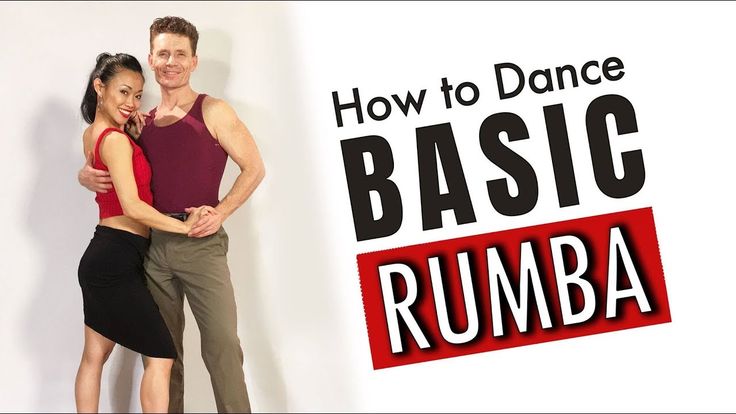
Instantly access our exclusive collection of 15+ tutorials, all styles/levels!
GET MY FREE CLASSES
Page load linkRead online “Accompanied by dance. A guide for beginner choreographers”, Daria Osipova – LitRes
© Daria Osipova, 2021
ISBN 978-5-0050-9015-7
My name is Daria Osipova - I am a dancer and choreographer. I also run the Youtube channel "Choreographer Daria Osipova", I write articles and books on dance topics.
This is my second book and I wrote it specifically for future choreographers. Although the information may well be useful to current choreographers. nine0003
My experience as a dance teacher is 7 years. And I decided to share with you my experience, best practices, tricks and interesting points related to my work.
If you want to become a competent choreographer and understand the intricacies of our work, then I invite you to my training course. However, this book contains the information you need about the dance profession.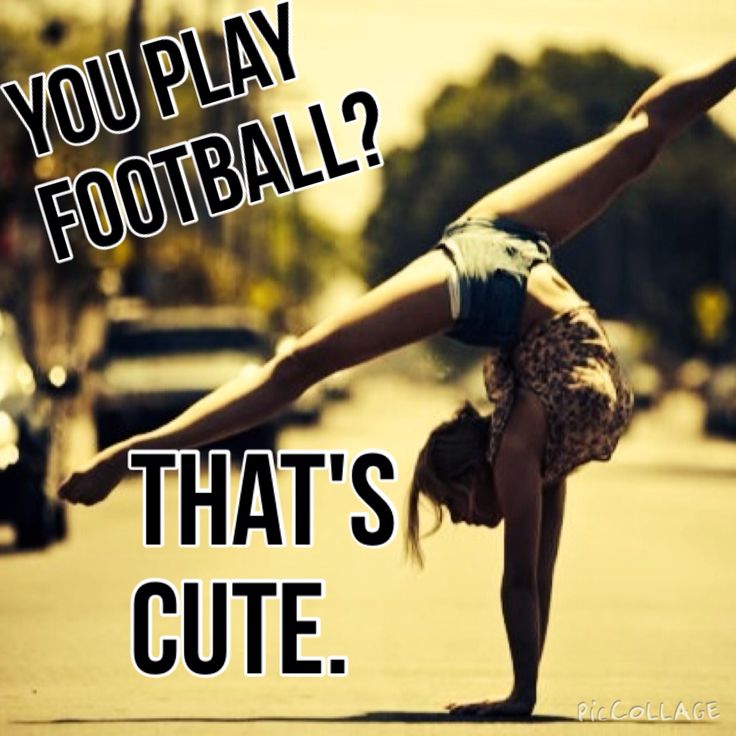
My book is a collection of experiences and by reading it you will be able to avoid the mistakes that I made. And although they say that someone else's experience has not yet taught anyone, and you will eventually develop your personal baggage, still do not give up knowledge that can benefit you. nine0003
The book you are holding in your hands is a reminder that we all go through a difficult path, face difficult situations, overcome crises and only become better.
And if you do not give up at the beginning of the path, then you will only become stronger further on.
And in our business, you can't give up.
I wish you good luck in your dance development.
Happy reading.
1. Dancer or choreographer
Do you think it is possible to combine these two directions? nine0003
Or maybe you already work in this mode?
As a person who has gone through this stage, I will say this - it is real, but difficult. Even if you are a person infinitely in love with your work, even if you are on fire with the stage and dancing, still the nervous system is not infinite. Sooner or later, she will tell you "I'm on vacation without me yet." Moreover, the vacation can be unplanned.
Sooner or later, she will tell you "I'm on vacation without me yet." Moreover, the vacation can be unplanned.
Do you want it? If not, here are some tips from me. I will definitely give examples from my life, and you will understand what to do to combine dancing, love for them and money in your life. nine0003
When you start working in the dance or fitness industry, you are on fire. You gain a huge number of hours for yourself, you have a lot of personals, if other coaches/choreographers ask you to replace them, you do it without hesitation. You move forward on the energy that your own work gives you. But, I will upset those who are now in this stage - this will pass, but your endless working hours will not. Over time, your friend “habit”, an annoying lady who has everything the same, will begin to go to work with you. And if you are a person who likes changing scenery, then it turns out that this is not so much fun. Resetting your clock to others is problematic. Especially if you scored hours that fall on Sunday evening or Monday morning.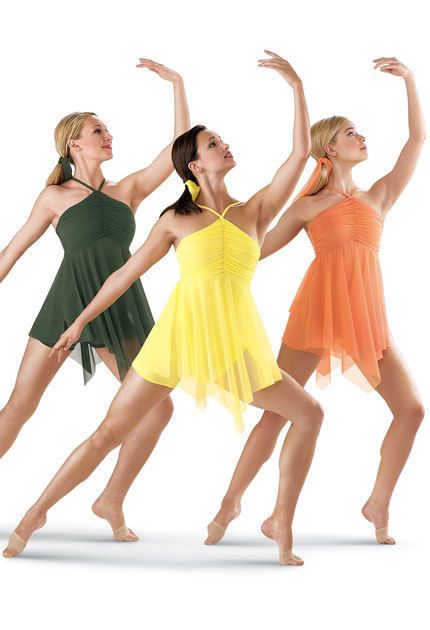 nine0003
nine0003
I myself worked like that at two jobs. From Monday to Friday, I worked at an office job from 8 am to 5 pm.
Evenings were planned as follows:
– work in the fitness club from 6 pm to 9 pm;
- own training.
On Saturday and Sunday I also worked at the fitness club. Can you imagine what happened to me after a year and a half of such a regime? Nothing good, moral and physical exhaustion. Also, the appearance left much to be desired.
Therefore, the first piece of advice for all novice choreographers: don't overdo it and don't take something that will start to become a hard burden in the future. Imagine that you are carrying a heavy bag. You have to walk 2 kilometers. And the first few steps still seem easy, but then the bag begins to pull the hand hard. It's the same with workouts. At first there are forces, but then they will not remain.
Especially if you are trying to combine work and study, but more on that later.
Work and study.
And if two jobs and studies. But this is already a lyric.
And I am no exception, I also combined work and study. Moreover, I just had two jobs and studies, however, in absentia, so it was a little easier for me than for full-time students. Although if we take office work from 8 to 17, then we will probably find ourselves in equal conditions.
Here I will not spread my thoughts along the tree and I will say briefly, take care of your strength. Better less is better, you still have time to work out in dancing and fitness. Especially if you decide to tie the knot with this area. Set your priorities. If at this point in time your goal is to finish your studies and earn some money, then throw all your energy into your education. And then there will be free time, and you will give it to training. nine0003
But don't cut your time for rest either. Trust me, you deserve it.
But this is not the main thing.
Let's see if it is realistic to combine the profession of a dancer and a choreographer? Realistically, but on the condition that you do not burn out at work, and you still have the strength for your own development.
What is it about?
We are talking about your students who share or do not share energy with you. During training, there is an exchange with students. You to them, they to you. A one-sided game will not work. If only you give, then your students are real vampires, there are some, believe me. Don't expect returns from them. After such a training, you do not have satisfaction, you want to go home under the covers and not talk to anyone. nine0003
After a good exchange training, you are in the mood to create, to fly, to do something. It is this state that is worth its weight in gold, and if you stay in it constantly, then the flow of energy will constantly inspire you to new achievements precisely as a dancer.
If you do not give energy to your students, then you have nothing to do in this profession. That is, it turns out a trick, the students may not give you back, but you are obliged. But, if the students do not give, you run out of steam. So think. nine0003
My Experience
This was one of the reasons I stopped teaching in 2018.
I just didn't feel the return. Yes, there were several people who pissed at each lesson and the results of my work were visible from them. Others allowed themselves to cheat. There were other reasons, but this was one "of". If you do not see the result of your work, the meaning of your being in the profession of a choreographer is lost.
The next point is when you don't just teach people to dance, but pull them up to your level and higher. This is a professional team. It is here that you gather all those who are on fire with the stage, clips, etc. But, do not forget that you spend most of your time in the hall, at rehearsals. And explain to your students that if there is a choice between the girlfriend's birthday and training, then first the training, then the girlfriend. nine0003
Here you will need a lot of strength, but here the game will definitely not work with one goal. You are a team and any team must have a leader. It is you. But responsibility is not removed from your students, they are exactly the same members of the team and must do everything for their development. Train on your own, improve your level and actively participate in the life of the team. But the hostess is alone in the kitchen.
Train on your own, improve your level and actively participate in the life of the team. But the hostess is alone in the kitchen.
If you pull the whole team, and they don't really need it, you turn into a horse that drags a wagon with people behind it. They rest there, enjoy a walk, and you work. I think the comparison shows very well what you can get into with people who are not going to work on an equal footing with you. Therefore, look for responsible people and those who are passionate about this business in your team. Provided that you want to be a choreographer. nine0003
Are you a dancer?
My Experience
In January 2018, unexpectedly for myself, I suddenly realized that I did not want to teach anymore. At all. I ended up as a choreographer. I could no longer come up with bundles for others, or rather, I did it, but it was hard for me. I couldn't even squeeze out a movement. I didn’t see the results of my work, and in general, something burned out inside.
And it seems final.
I became irritated during training, which was not typical for me. I am a very hot-tempered person, but training is sacred and I didn’t even have a thought to freak out. And then it covered time after time. nine0003
Understanding myself and sorting out a mountain of garbage from accumulated thoughts and emotions, I got to the bottom of the matter: I don’t want to be a choreographer, I want to be a dancer. For 1.5 years of the existence of the studio, I forgot that I am the most important person in my life. I bet too much, but in the end I got nothing.
And it was decided that I was no longer a choreographer. I am a dancer who continues to develop and does everything so far for his development and movement forward.
I literally had to lose everything. But this is not the most terrible loss, it is more terrible to lose yourself. At that moment, the choice was made. nine0003
Have you already decided who you are?
Both areas of dance activity are very complex.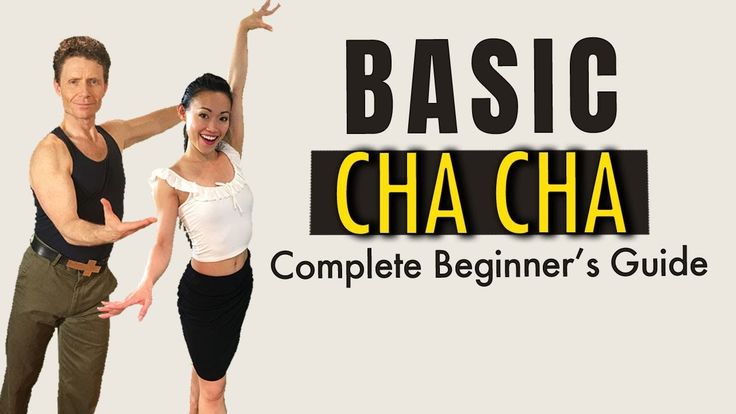
The choreographer is responsible for himself and others.
The dancer is only for himself, but does not stop working on himself even for a minute. You must constantly evolve.
Not everyone can be a choreographer. This is not just a profession that you enter with a dance experience behind you. You need to be able to interact with different people, be able to explain and not get annoyed when a person does not understand from the twentieth time. It’s also good to develop oratory skills in this profession so that you are listened to. nine0003
Everything is easier with a dancer, but here the responsibility is completely on you. Of course, you can attend classes of other choreographers, work under the guidance of a coach, but the lion's share of the work remains with you. And also on you is the support of your loved one, criticism of yourself, and constant work on yourself beloved.
You can be both a choreographer and a dancer, but who are you more at heart?
I realized that I am a dancer at the present moment of my life. But I don’t want to abandon my teaching activity either, I like it. nine0003
But I don’t want to abandon my teaching activity either, I like it. nine0003
Is it possible to combine work, study and work you love?
Everything is real. But do not exchange and remember your main goal. If you do not know where to apply yourself, then you will spend a lot of time and health on the husk.
Separate the wheat from the chaff and do not deceive yourselves.
As a teacher, you must love what you do. If you don’t have this, you have no place in dancing, as a choreographer.
I have always thought that dancing is not fitness. No offense to fitness trainers, but becoming an instructor is much easier than becoming a professional dancer or choreographer. But this is a topic for a separate chapter. nine0003
There are many qualities that you should possess as a choreographer. Starting with the little things: your speech, presentation, appearance. And ending with more global ones, which we will talk about. Although we will return to the details later.
So, what qualities of yourself will you have to work on as a choreographer?
Be discreet.
I wanted to say that the most important quality, but no - one of the main ones. Be restrained: do not freak out, do not roll your eyes, do not use phrases that offend the student, etc. Be prepared for the fact that not all students will understand you the first time, someone will not understand you even from the tenth. And someone, after learning the choreography, will start asking questions about that part of the bundle that you thought everyone had learned a long time ago. Yes, it happens. nine0003
Not to mention the fact that all students react differently to their failures. Someone digests inside himself, and someone starts to get angry and shows his lack of understanding of the material to everyone around. At this moment, you need to remain calm and bring the “raging” student back to normal.
Imagine what would happen if you both started throwing chairs.
And in general, restraint will help you throughout your life. You can imagine how you will educate yourself if you learn not to react to acute and conflict situations. Therefore, say thank you to the profession of choreographer for this and move on. nine0003
Be careful.
Remember the phrase that should accompany any of your lessons: “Do you have any questions?”
No, this does not mean that you enter the hall and instead of the phrase "hello" you ask "I have questions." It will be very strange. It is in the process of learning, when you lay out new material, ask the students later if they understand everything.
By the way, here too you may encounter a wall of misunderstanding. The fact is that a lot of students like to play partisans. Like, there are questions, but I won’t ask - guess for yourself. After all, choreographers are mostly psychics and can read people's minds. Joke. nine0003
And here, too, you can act in two ways:
1. Threat.
Threat.
Do not be afraid, do not frighten people with reprisals against them. Just say that if there are no questions, then the students will now all dance perfectly. If they don’t dance, they do push-ups 10 times. A couple of such tricks and now there are fewer partisans.
There are a lot of sophisticated "torture" methods, you can put students in the bar, make them do a press or jump with their knees high a million times. As I always say, human imagination is limitless. And even more so the choreographer's fantasy. nine0003
2. Point out the errors that you saw during the execution.
But just don’t poke everyone on his “jamb”, especially if you are studying with beginners, but explain to the whole group. And make everyone check themselves. This is useful.
If you are studying with an advanced group, you can point out the mistakes personally.
These simple things can improve your work.
And, of course, keep an eye on the condition of your students, but more on that in the next chapter. nine0003
nine0003
Now let's move on and talk about your health.
Know how to relax.
A very important point and I would even put it in first place. It is very important to be able to relax and switch your attention from work to rest. Learn to rest, I didn’t know how to do this at one time and eventually burned out.
And you can burn out very quickly and then recover for a very long time.
It's good when work is your favorite thing. But still, it's work. Therefore, allocate for yourself your favorite trips to the spa, to massage, to the cinema, just walk along the street, read your favorite books. You can even go to training yourself and learn something new. nine0003
Although they say that someone else's experience has not yet taught anyone, I still hope that you will put everything in its place from the very beginning. Here we are working, and here we will put a sun lounger.
These simple rules will help you become a more competent choreographer and develop your best qualities. Remember that any situation in life makes us better. And if you also successfully pass certain life lessons, then you climb the steps of your own development.
Remember that any situation in life makes us better. And if you also successfully pass certain life lessons, then you climb the steps of your own development.
If you have embarked on the path of a choreographer, make the most of this profession and yourself. Get better, grow, work on yourself, overcome any obstacles and difficulties. And over time, you will gain grateful customers and experience, which is very important. nine0003
And now let's move on to the little things, what exactly do you need to represent yourself so that the client wants to listen to you and does not want to leave.
Speech.
I'll start hard, if you mumble and speak softly, not only will no one hear or understand you, they won't take you seriously either.
Psychologists say that the voice should be low and calm. And it seems even possible to develop such a voice, but I will say this: no matter what voice, the main thing is to speak loudly, clearly and confidently. nine0003
Students should not set up locators and try to catch your every word.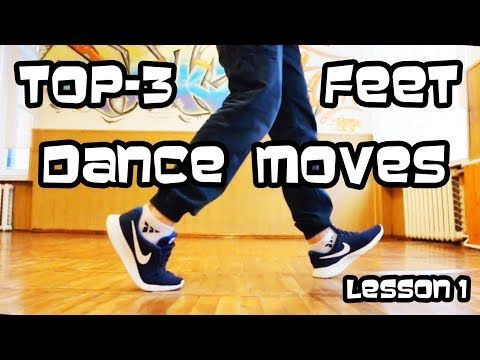 They must understand what you are saying. And, of course, to hear you. Develop a commanding voice, speak loudly and clearly. This is the first step towards student success.
They must understand what you are saying. And, of course, to hear you. Develop a commanding voice, speak loudly and clearly. This is the first step towards student success.
Supply.
You can bring everything here at once, but still it is more your energy and your desire to teach others the art of dance. If you confidently enter the hall and hold yourself confidently, the students will already "fall" on you. Imagine a contrast, or you enter with a straight back and walk towards the students with a confident step. Either the shoulders sadly fell forward, the back is round, the gaze is on the floor. Represented? nine0003
That's the difference. Therefore, we enter the hall confidently, with a straight back, proudly raised head, and we mint our every step.
Appearance.
It is clear that we are not talking about pumped up lips and fillers. And that you must comply with your lesson and dress beautifully. Yes, it’s beautiful, the students look up to you, you can’t afford to look bad.
I remember once I saw a video with a strip plastic training. So the strip coach was dressed like a hip-hop dancer: oversized pants, a bandana on her head, sneakers on her feet. In general, she did not look like a choreographer who teaches strip plastic. Be sure to follow the style of your lesson. No other way. Imagine if a ballerina comes to a classical choreography lesson in oversized pants and a stretched T-shirt. I don't think they will let her in before class. In the same way, you should not allow yourself to the lesson in an indecent form. nine0003
Watch your appearance, your clothes, your appearance in general - this is important, even if you think differently, then start thinking DIFFERENTLY. They are greeted by clothes, so it was, so it is and so it will be.
It seems that the choreographer already has enough work, so there are also so many rules to follow. But this is not difficult, and gradually you yourself will come to your own philosophy. Be not better than others, but better than yourself yesterday.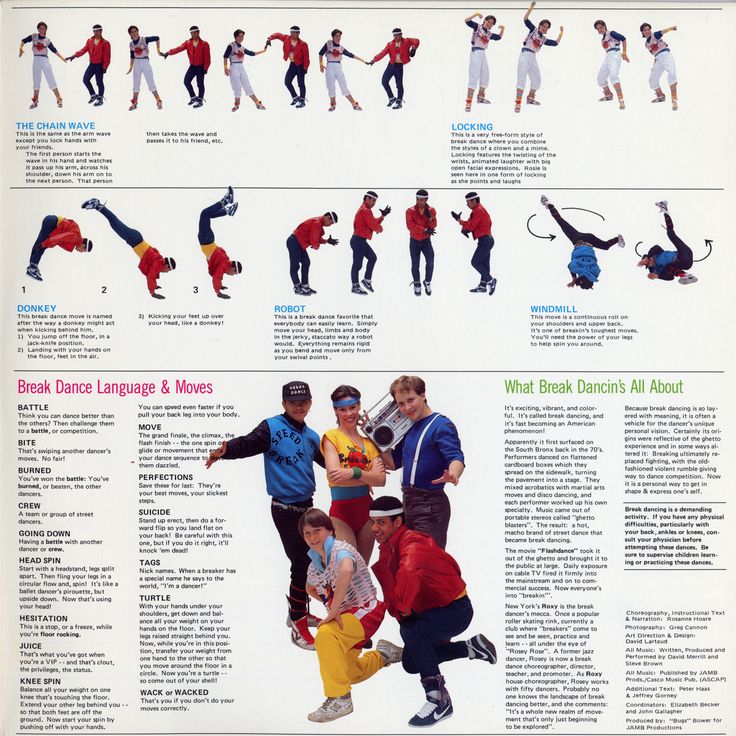 This is more important, only in this way you begin to differ and attract your people to you. nine0003
This is more important, only in this way you begin to differ and attract your people to you. nine0003
2. I want to teach, where do I start?
Once I had a conversation with a friend of mine, a choreographer, who said the following thing, that she wanted to propose her candidacy for the position of a strip coach, but was too shy. Although the girl has been working as a coach and teaching dance for more than a year, it seems that there is nothing to be ashamed of. But it turned out, no, it happens.
Shyness and self-doubt , that's what awaits a person who is just setting foot on the dance path as a teacher. nine0003
Why? Because there is no experience, and if there is no experience, a person begins to devalue and compare himself. Moreover, as you understand, the comparison is far from in favor of our heroine. Look, how many talented and dancing, all the clients have already been snapped up, and in general, where am I with my experience (and sometimes even with the lack of it). But no, although the niche does not suffer from the absence of choreographers, remember that your contribution can be very significant.
But no, although the niche does not suffer from the absence of choreographers, remember that your contribution can be very significant.
Therefore, the first thing you will have to fight is not with the world around you, but with yourself and your mind, or rather, in this case, its absence (sorry, but your uncertainty is fear and emotions). nine0003
Being shy will not lead you to success. Start sending resumes to all schools that require choreographers. I once also started my coaching and path and sent my resume to one of the most elite fitness clubs at that time. And got a job. And if you hadn't sent it? It is not known what it is now. And I had a crazy desire to change my life and start doing what I love. This prompted. Therefore, away from embarrassment. They will refuse a vacancy - nothing bad will happen to you. This will not be the first and not the last failure. nine0003
What if they don't refuse? You can't know, so try.
Uncertainty is synonymous with embarrassment, but in a slightly different capacity.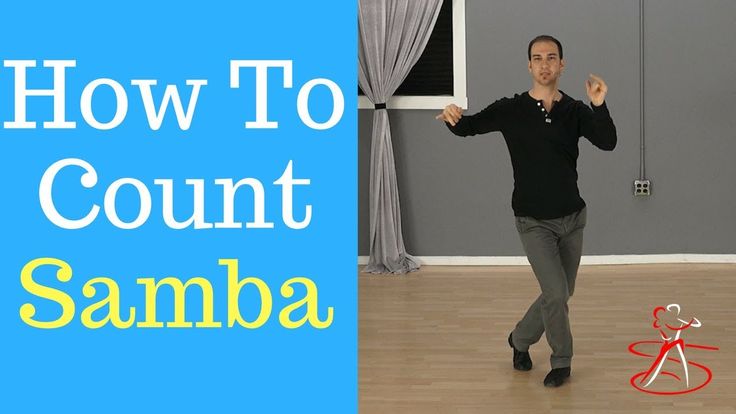
If you want to work as a coach, remove your uncertainty. Imagine a picture, you are a coach and you have a group of 20-30 people, and you are trying to fawn over something. And what do you think a group of people will do? Well, in the best case, they will stand with dissatisfied faces, and in the worst case, they will “crush” you. And they will do it with great pleasure. What it is, I will write later. nine0003
Have you ever seen an experienced, uncertain coach? Me neither. Because a person knows that he is in his place, is confident in himself, knows his business, and here we move on to the next point.
Know your business!
You may be the most aspiring choreographer in the world, but you must know your business so that no one can doubt your competence. Yes, there is little experience, but knowledge bounces off teeth. This will give you more confidence.
Where to start? Most often, choreographers are those who have already achieved some success as a dancer.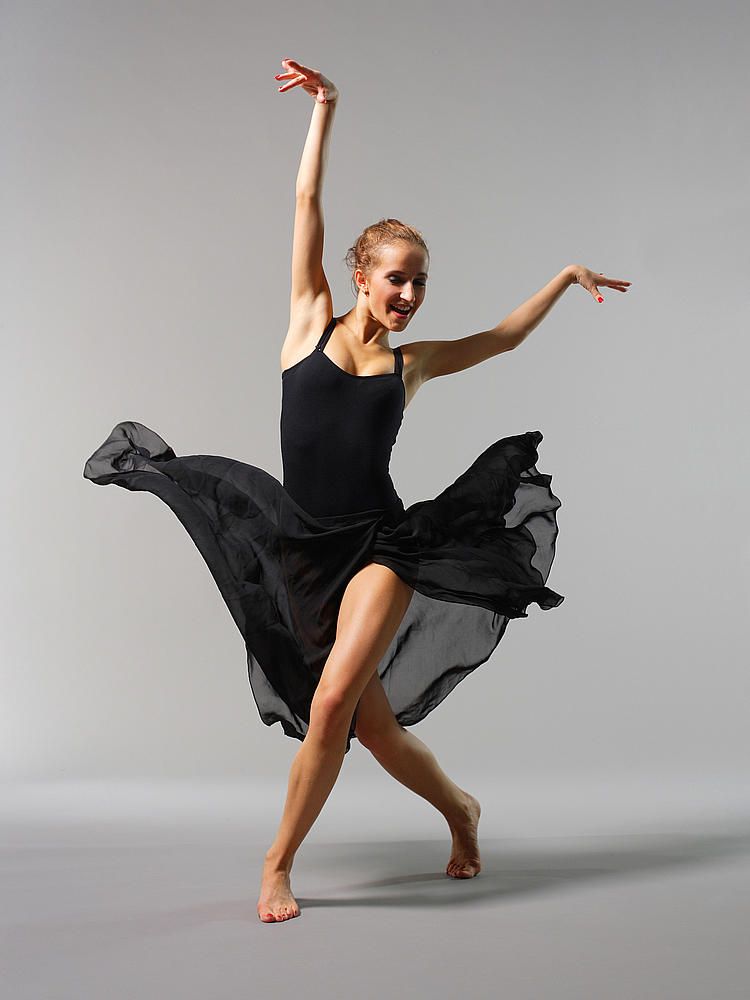 nine0003
nine0003
Accordingly, you already know more than the average person who comes to dance with you. You definitely know the basis of your direction, you know how to properly warm up, how to convey the material to students.
And no one bothers you to practice on your friends. Invite them to a trial workout, give them a warm-up and the main part of the lesson. Practice yourself and get feedback from "your" people. It's easier than starting with strangers. And try to invite amateurs and professionals to your "trial" lesson. Hear different points of view and you will already know exactly what to work on. Although, of course, you will gain all the practice and experience directly with "real" students. nine0003
Learn anatomy, basic nutrition, start developing and learning more. Don't stay within your own direction. Expand your horizons. From my own experience, I can say that students can ask a variety of questions. Starting from the technique of a certain movement to questions about how to lose weight and stay healthy.
But God forbid you start playing doctor. If a client complains to you about pain and wants you to work as a choreographer - a doctor - a psychic, then I advise you to refuse. You are not a doctor, your answer should be reduced to one phrase "if something bothers you, go to the doctor." Do not analyze the disease, you do not have the right to do this, this should be done by a specialist. nine0003
Another important point! As I wrote above, sometimes thoughts “choreographers and so many, where else can I go?”
First of all, what does it matter to you how many choreographers there are on planet Earth, if you just burn with dancing and want to devote your life to this profession?
Don't think about others, they do their thing, you do yours. Think about yourself, about what makes your eyes burn, what you want to share with others. This is much more important than how many choreographers are on the planet and how many appear every day. And how many more will appear.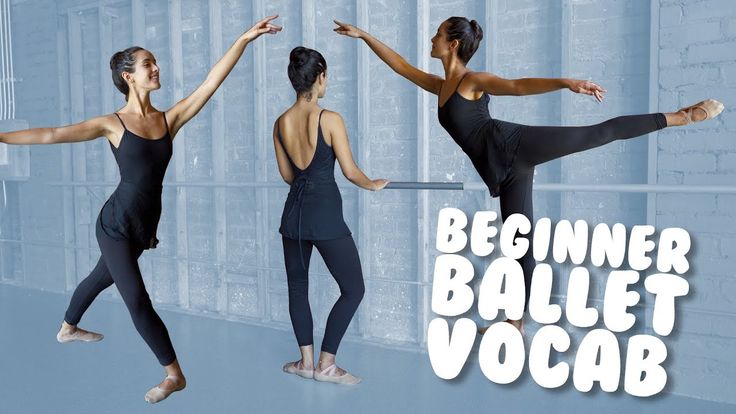 nine0003
nine0003
Secondly, believe me, there are enough students for everyone. 7 billion people live on Earth, do you think that among them there will not be those who want to study with you? There will be, the main thing is to think positively (banal, but it helps) and try to get this stereotype out of your head altogether. This is also a long and deep work on yourself, but by reprogramming your internal computer, your attitude to this issue changes.
If you are sure that the dance world is full of talent without you, then you are wrong here. You have that trait, that manner, that style that people need. And if the idea came to your mind to dance, and later start teaching it to those who wish, then maybe this is your way, didn’t you think? nine0003
So, I hope that after this chapter, the lion woke up in you, and you are ready to send your resume almost to the presidential regiment. But we are not going there, let's leave it to strong men. Girls to dance.
Have you already found a vacancy?
Argentine Tango Beginner's Guide
March 08, 2008
Welcome to Argentine Tango
Argentine tango has thrilled dancers for over 100 years.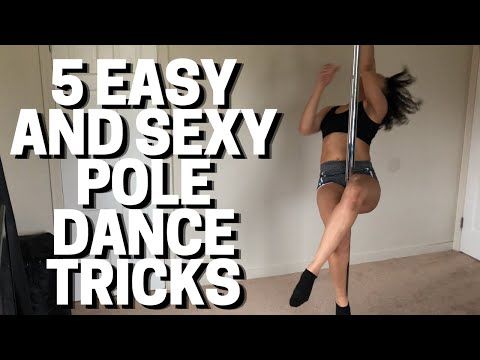 Tango is loved by dancers and audiences for its beauty, passion, drama and excitement. Learning how to dance social tango is based on improvising the movements and respecting your partner and other dancers on the dance floor. The essence of Argentine tango in life and especially in the relationship between a man and a woman. Graciela Gonzales, a leading tango teacher, calls the dance "a three-minute love story." This guide offers a brief overview of the history of tango, what to expect in class, the different types of tango danced at parties, the music, and tango etiquette. Also included are useful terms, a beginner's checklist, and some resources available on the web. nine0003
Tango is loved by dancers and audiences for its beauty, passion, drama and excitement. Learning how to dance social tango is based on improvising the movements and respecting your partner and other dancers on the dance floor. The essence of Argentine tango in life and especially in the relationship between a man and a woman. Graciela Gonzales, a leading tango teacher, calls the dance "a three-minute love story." This guide offers a brief overview of the history of tango, what to expect in class, the different types of tango danced at parties, the music, and tango etiquette. Also included are useful terms, a beginner's checklist, and some resources available on the web. nine0003
Tango yesterday and today
The exact origins of tango - both the dance and the word itself - are lost in myth and unrecorded history. According to the generally accepted theory, in the mid-1800s, African slaves brought to Argentina began to influence the local culture.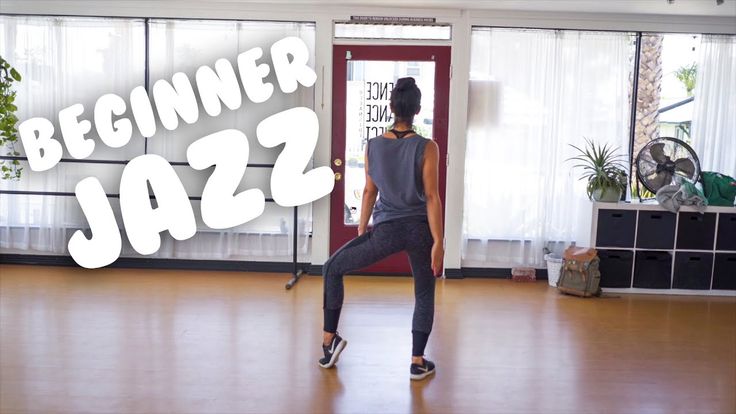 The word "tango" may be of direct African origin, meaning "closed place" or "reserved ground". Or it may have come from Portuguese (and from the Latin verb tanguere, to touch) and was used by Africans on slave ships. Whatever its origin, the word "tango" has become the standard for a place where African slaves and free blacks gather to dance. nine0303 Argentina was subject to massive immigration in the late 1800s and early 1900s. In 1869 the population of Buenos Aires was 180,000. By 1914 its population was 1.5 million. The mixing of Africans, Spaniards, Italians, British, Poles, Russians and native Argentines resulted in a mixing of cultures, all borrowing dances and music from each other. Traditional polkas, waltzes and mazurkas were mixed with the popular habanera from Cuba and candombe rhythms from Africa.
The word "tango" may be of direct African origin, meaning "closed place" or "reserved ground". Or it may have come from Portuguese (and from the Latin verb tanguere, to touch) and was used by Africans on slave ships. Whatever its origin, the word "tango" has become the standard for a place where African slaves and free blacks gather to dance. nine0303 Argentina was subject to massive immigration in the late 1800s and early 1900s. In 1869 the population of Buenos Aires was 180,000. By 1914 its population was 1.5 million. The mixing of Africans, Spaniards, Italians, British, Poles, Russians and native Argentines resulted in a mixing of cultures, all borrowing dances and music from each other. Traditional polkas, waltzes and mazurkas were mixed with the popular habanera from Cuba and candombe rhythms from Africa.
Most of the immigrants were single men hoping to make money in this expanding country. They were usually poor and desperate and hoped to earn enough money to return to Europe or bring their families to Argentina. The development of tango reflects the deep meaning of their loss and longing for the people and places they left behind. nine0303 Most likely, tango was born at Afro-Argentinean dance parties attended by compadritos, young people, mostly born poor, who liked to wear fedoras, loosely tie neck scarves, wear high-heeled boots and knives casually tucked into their belts. The Compadritos brought the tango to Corrales Viejos - the slaughterhouse district of Buenos Aires - and introduced it to the various entertainments of the poor with dancing: bars, dance halls and brothels. It was here that African rhythms met Argentine milonga (fast-paced polka) music, and soon new steps were invented and taken up. nine0303 And while high society looked down on what was happening on the outskirts, the rich sons of the oligarchs of Buenos Aires did not shy away from visiting the slums. Eventually everyone learned about tango and, by the early twentieth century, tango, both as a dance and as an embryonic form of popular music, had established a firm foothold in the rapidly growing city of its birth.
The development of tango reflects the deep meaning of their loss and longing for the people and places they left behind. nine0303 Most likely, tango was born at Afro-Argentinean dance parties attended by compadritos, young people, mostly born poor, who liked to wear fedoras, loosely tie neck scarves, wear high-heeled boots and knives casually tucked into their belts. The Compadritos brought the tango to Corrales Viejos - the slaughterhouse district of Buenos Aires - and introduced it to the various entertainments of the poor with dancing: bars, dance halls and brothels. It was here that African rhythms met Argentine milonga (fast-paced polka) music, and soon new steps were invented and taken up. nine0303 And while high society looked down on what was happening on the outskirts, the rich sons of the oligarchs of Buenos Aires did not shy away from visiting the slums. Eventually everyone learned about tango and, by the early twentieth century, tango, both as a dance and as an embryonic form of popular music, had established a firm foothold in the rapidly growing city of its birth.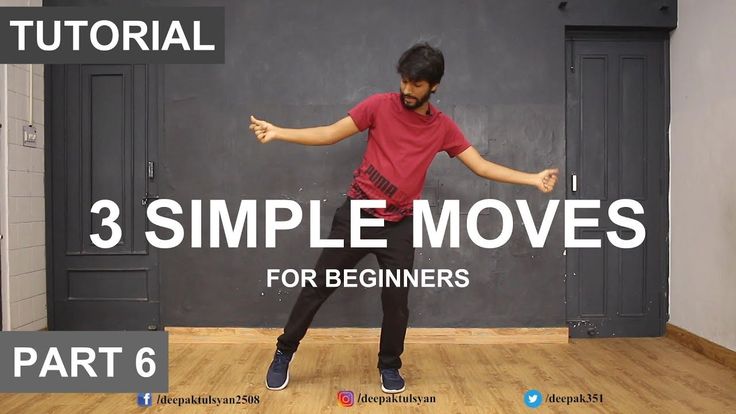 It soon spread to the provincial towns of Argentina and across the Plate River to Montevideo, the capital of Uruguay, where it became as big a part of urban culture as it was in Buenos Aires. nine0303 The international spread of tango began in the early 1900s when wealthy sons of Argentine families arrived in Paris and introduced tango to a society that was eager for novelty and not entirely averse to the risky nature of the dance or dancing with young wealthy Latinos. By 1913 tango had become an international phenomenon in Paris, London and New York. There were tango teas, tango sightseeing trains, and even tango colors that looked more like orange. The Argentine elite, shunning the tango, were forced to embrace it with national pride. nine0303 Throughout the world, tango spread during the 1920s and 1930s. The dance appeared in movies and tango singers traveled the world. By the 1930s, Argentina's Golden Age had begun. The country ranked among the ten richest countries in the world and music, poetry and culture flourished.
It soon spread to the provincial towns of Argentina and across the Plate River to Montevideo, the capital of Uruguay, where it became as big a part of urban culture as it was in Buenos Aires. nine0303 The international spread of tango began in the early 1900s when wealthy sons of Argentine families arrived in Paris and introduced tango to a society that was eager for novelty and not entirely averse to the risky nature of the dance or dancing with young wealthy Latinos. By 1913 tango had become an international phenomenon in Paris, London and New York. There were tango teas, tango sightseeing trains, and even tango colors that looked more like orange. The Argentine elite, shunning the tango, were forced to embrace it with national pride. nine0303 Throughout the world, tango spread during the 1920s and 1930s. The dance appeared in movies and tango singers traveled the world. By the 1930s, Argentina's Golden Age had begun. The country ranked among the ten richest countries in the world and music, poetry and culture flourished.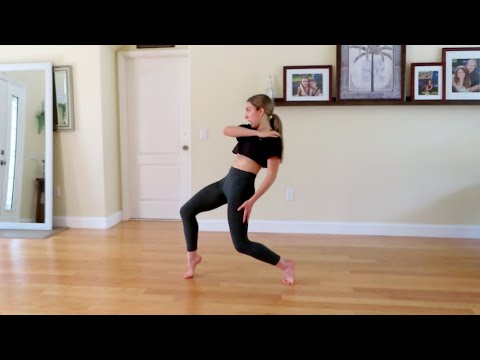 Tango became a fundamental expression of Argentine culture and the Golden Age continued throughout the 1940s and 1950s.
Tango became a fundamental expression of Argentine culture and the Golden Age continued throughout the 1940s and 1950s.
The well-being of tango has always been tied to economic conditions, and this was very true in 1950s. During this time when the politics of repression were developing, the lyrics reflected political sentiments until they began to be banned as subversive. Dance with music went underground as most dance venues were closed and large gatherings were banned altogether. Tango has survived in small, undisclosed meeting places and in the hearts of people.
The need to go underground, combined with the possible intrusion of rock and roll, led to the demise of tango until the mid-1980s, when the Tango Argentino show opened in Paris. Once again, Paris became the starting point for igniting the wave of tango around the world. The show toured all over the world and spurred a revival in Europe, North America and Japan, of which we are a part today. nine0003
Argentine tango basics
Argentine tango is an improvisational dance built from four elements: steps, turns, stops and embellishments.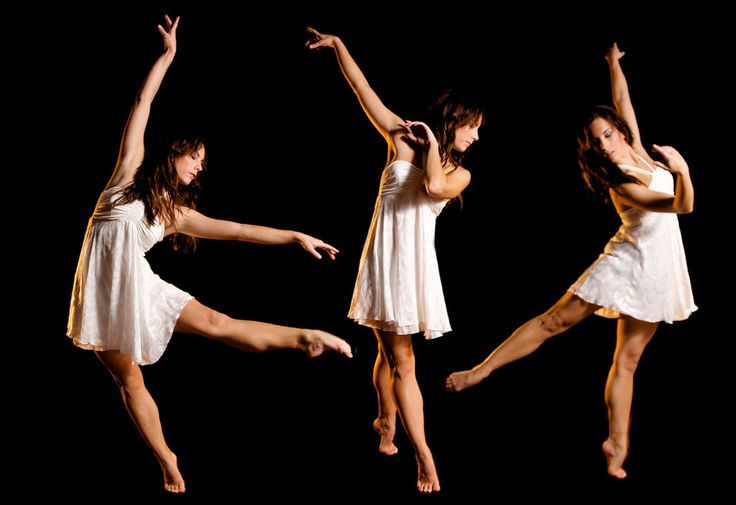 The dance is like a puzzle that is put together differently each time. Women and men bring their own styles and embellishments to the dance, which contribute greatly to an exhilarating and unpredictable experience. Even though the dancers follow certain conventions, they never know exactly how the dance will be structured, decorations added, or music interpreted. The unexpectedness possible in dancing is what makes dancing so exciting. It really gets two people into the tango because the dance is not just about the man leading and the woman following. Both partners have something to invest - as in a good conversation. nine0303 Tango is danced counter-clockwise, just like racing. The dancers try to stay on the outer edges of the hall away from the center. If you look at the tango dance floor from above, you will see the movements of the dancers like a descending river, flowing smoothly and sometimes stopping to spin in a shallow whirlwind.
The dance is like a puzzle that is put together differently each time. Women and men bring their own styles and embellishments to the dance, which contribute greatly to an exhilarating and unpredictable experience. Even though the dancers follow certain conventions, they never know exactly how the dance will be structured, decorations added, or music interpreted. The unexpectedness possible in dancing is what makes dancing so exciting. It really gets two people into the tango because the dance is not just about the man leading and the woman following. Both partners have something to invest - as in a good conversation. nine0303 Tango is danced counter-clockwise, just like racing. The dancers try to stay on the outer edges of the hall away from the center. If you look at the tango dance floor from above, you will see the movements of the dancers like a descending river, flowing smoothly and sometimes stopping to spin in a shallow whirlwind.
Is Argentine tango the same as ballroom tango?
No.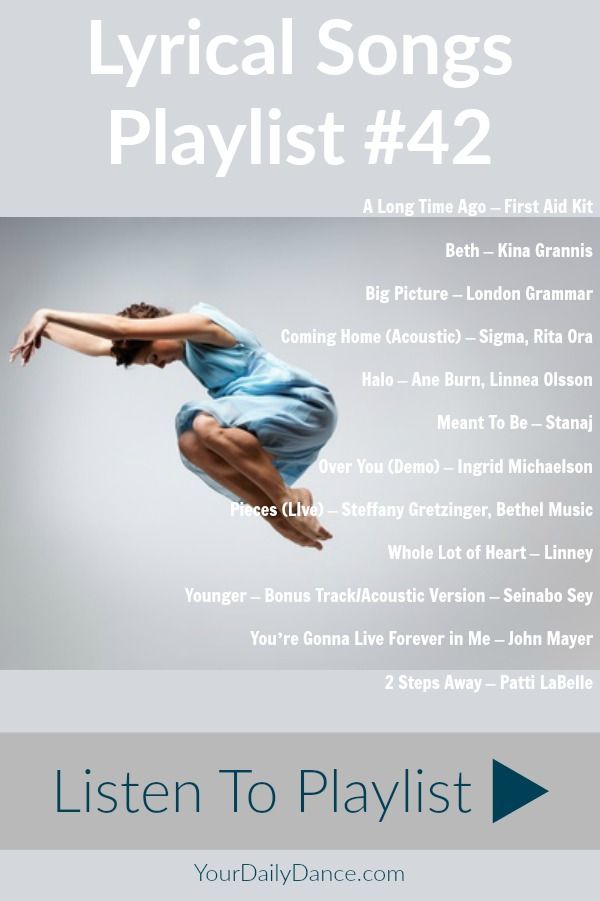 They have common roots, but the place, time and nature of the development of dances separated them. International ballroom tango is very different from social tango in Argentina. Argentine tango differs from ballroom tango in terms of position, embrace, improvisation, movement, balance, steps, and music. It is completely different from the top of your head to the bottom of the soles of the shoes you use to dance it. nine0303 If you have ballroom tango experience, think of Argentine tango as a completely new dance, not as an extension of what you already know.
They have common roots, but the place, time and nature of the development of dances separated them. International ballroom tango is very different from social tango in Argentina. Argentine tango differs from ballroom tango in terms of position, embrace, improvisation, movement, balance, steps, and music. It is completely different from the top of your head to the bottom of the soles of the shoes you use to dance it. nine0303 If you have ballroom tango experience, think of Argentine tango as a completely new dance, not as an extension of what you already know.
Is Argentine tango a stage dance?
Quite a few people are interested in dancing the tango because they have seen a tango show. The tango you see on stage is related to social tango, but very different from it. Stage tango is called "fantasy" and is more theatrical and exaggerated than social tango for the simple reason that the audience must be able to see the performance from the back row. nine0303 Watching a performance is a great opportunity to see tango, and (hopefully) hear a live tango orchestra. Once you hear bandoneon live, you will never forget it.
nine0303 Watching a performance is a great opportunity to see tango, and (hopefully) hear a live tango orchestra. Once you hear bandoneon live, you will never forget it.
Tango classes attendance
When you start learning tango, attending a class is the best way to get your bearings on the dance. Sign up and visit regularly. All the good dancers I know are good because they signed up for the first series of classes and attended them all. Learning how to dance the tango is a wonderful commitment you make to yourself, and consistency is as important to that goal as it is to anyone else in your life. Enrolling and attending one class a month here and there will only frustrate you. nine0303 A good tango class should introduce you to the following elements of tango: step, turn, stop, navigation, musicality, and some embellishments. Tango is a dance based on steps, so you must practice this essential element. The good news is that if you already know how to walk, you only need to practice the movement with a partner.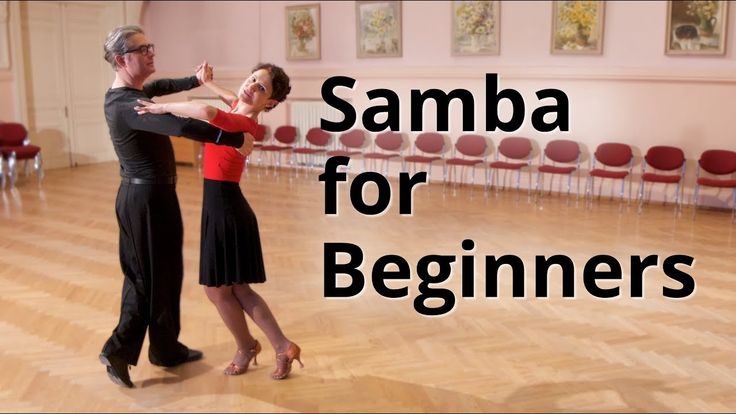 All great tango dancers work on their step. In fact, one of the best praise a tango dancer can receive is, "Look how well he's going!" No matter how experienced the students are, I have never seen a good tango teacher start a class without step exercises. nine0303 Once you've "walked your miles", you'll learn how to turn around, how to momentarily stop on the floor, how to navigate a crowded room, how to listen to and learn different types of tango music, and how to add your own signature to the dance in the form of embellishments. Since tango is an improvisational dance, you should also pay attention to this aspect of the dance. Tango is a dance that you create on the fly with another person. It is not memorizing a sequence of steps that is repeated every time. Improvisation is one of the most beautiful aspects of tango and is what makes the dance endlessly interesting. nine0003
All great tango dancers work on their step. In fact, one of the best praise a tango dancer can receive is, "Look how well he's going!" No matter how experienced the students are, I have never seen a good tango teacher start a class without step exercises. nine0303 Once you've "walked your miles", you'll learn how to turn around, how to momentarily stop on the floor, how to navigate a crowded room, how to listen to and learn different types of tango music, and how to add your own signature to the dance in the form of embellishments. Since tango is an improvisational dance, you should also pay attention to this aspect of the dance. Tango is a dance that you create on the fly with another person. It is not memorizing a sequence of steps that is repeated every time. Improvisation is one of the most beautiful aspects of tango and is what makes the dance endlessly interesting. nine0003
Do I need a partner?
You don't need a partner to start learning to dance the tango. There are always loads of people taking classes and not everyone usually comes with a partner. In my experience, most come without a partner. If the class has a gender imbalance, the teacher can ask people to change each other and so everyone has a chance to learn. Don't let the absence of a partner stand in your way of learning.
There are always loads of people taking classes and not everyone usually comes with a partner. In my experience, most come without a partner. If the class has a gender imbalance, the teacher can ask people to change each other and so everyone has a chance to learn. Don't let the absence of a partner stand in your way of learning.
Tango teachers
If you are lucky enough to live in the city with at least one tango teacher, give them a try. They can be your first guides to the world of tango. In addition to teaching classes, local teachers usually help organize (or know about) seminars with visiting teachers. If there is more than one teacher in your city, take a few classes from all of them. Visit their practices and dances. See whose teaching and dancing style you like and whose teaching method is right for you. In my experience, the best tango teachers are the ones who bring out the best in you rather than trying to make you fit into their particular style (which is usually quite interesting to them). If you feel that the class is friendly, it might be right for you. nine0003
If you feel that the class is friendly, it might be right for you. nine0003
Video training
If a local teacher is not available, there are many videos available to study. If this is your case, then you will need a study partner. Even if you learn by video, I recommend traveling occasionally to take classes (group or private) and attend dances to experience dancing with other people. You can learn a lot from videos, but real hands-on experience is indispensable.
Seminar attendance
Once you are comfortable with the important elements of tango, you may want to attend (in your own city or elsewhere) special workshops that provide an opportunity to meet and learn from some of the world's best professional dancers. In addition, several week-long workshops held in Argentina or anywhere else in the world offer an incredible chance to combine travel with tango learning.
Teachers come for many reasons. Find out in advance from local organizers or dancers if the teaching style and level of dance experience expected in the class is right for you. If visiting teachers offer classes for beginners, check them out. You never know who will provide the correct information to give a clear understanding. nine0303 At the beginning of your study of tango, you will probably take seminars from as many different teachers as you can. Over time, however, you will find that certain instructors have a style of teaching and/or dance that suits your inclinations, and you will likely narrow down the number of people you learn from. You have an amazing variety of teachers and places to dance in - the whole world.
Find out in advance from local organizers or dancers if the teaching style and level of dance experience expected in the class is right for you. If visiting teachers offer classes for beginners, check them out. You never know who will provide the correct information to give a clear understanding. nine0303 At the beginning of your study of tango, you will probably take seminars from as many different teachers as you can. Over time, however, you will find that certain instructors have a style of teaching and/or dance that suits your inclinations, and you will likely narrow down the number of people you learn from. You have an amazing variety of teachers and places to dance in - the whole world.
Private lessons
Private lessons with local or visiting teachers are a great way to have someone evaluate and recommend your own dance. When a teacher can practice your dance without having to look at 40 other people at the same time, you can really learn a lot more.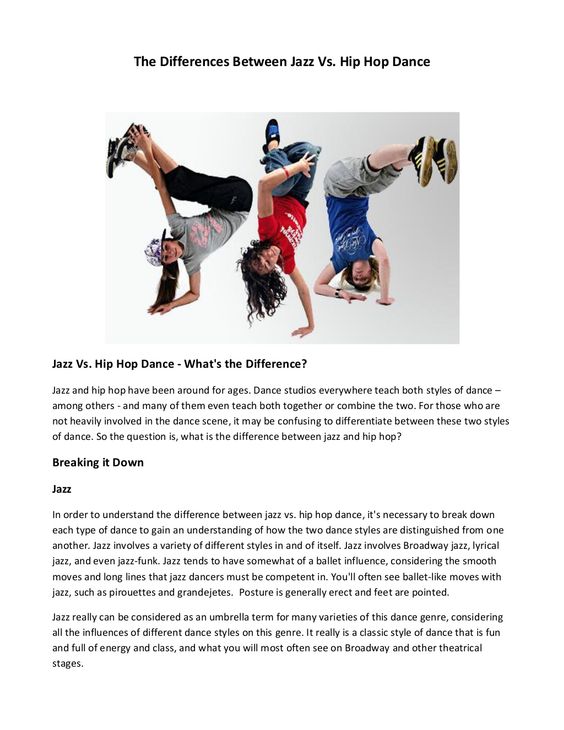 One hour of a private lesson with a great dancer can save you hours of frustration and help you avoid painful mistakes - both emotional and physical. nine0303 My recommendation for spending your money on private lessons is: (1) start taking group classes to see if you like tango, (2) attend a group class for at least two months to get the basics right, and (3) attend milongas (tango parties) and dance for hours. Once you've done these things, look around and see if there's a local teacher you'd like to take a private lesson with. Or perhaps a visiting teacher will arrive with whom you would like to study. Most visiting teachers give private lessons in addition to any seminars they give. Keep in mind that different teachers may have different requirements for private lessons (like the requirement to come with a partner) and they can be very limited in delivery. nine0303 If you don't have a local instructor, going to a private lesson will be the only way to get personal feedback. Here my recommendations are slightly different.
One hour of a private lesson with a great dancer can save you hours of frustration and help you avoid painful mistakes - both emotional and physical. nine0303 My recommendation for spending your money on private lessons is: (1) start taking group classes to see if you like tango, (2) attend a group class for at least two months to get the basics right, and (3) attend milongas (tango parties) and dance for hours. Once you've done these things, look around and see if there's a local teacher you'd like to take a private lesson with. Or perhaps a visiting teacher will arrive with whom you would like to study. Most visiting teachers give private lessons in addition to any seminars they give. Keep in mind that different teachers may have different requirements for private lessons (like the requirement to come with a partner) and they can be very limited in delivery. nine0303 If you don't have a local instructor, going to a private lesson will be the only way to get personal feedback. Here my recommendations are slightly different. Search the Internet for local teachers nearby or for teachers who can teach a seminar in the city you are interested in attending. Talk to everyone you can about their recommendations as to whether the teachers are suitable for beginners, their style, etc. Tango dancers love to talk about tango, so don't hesitate to call or email someone. Then plan some private lessons spread over several days. Don't try to pack too many things into one day - your brain needs time to figure it out and your muscles need time to assimilate new movements. nine0303 One word of caution about private lessons. Beware of teachers who force you to take lessons from them. Some teachers like to visit beginners and try to make them believe that private lessons with them cut down on tango learning. In my experience, teachers who tell you how much better you could be if only you had a few private lessons with them are usually just after your money. There are no cuts. Save your money for the instructors who are here to enrich your tango experience, not your pockets.
Search the Internet for local teachers nearby or for teachers who can teach a seminar in the city you are interested in attending. Talk to everyone you can about their recommendations as to whether the teachers are suitable for beginners, their style, etc. Tango dancers love to talk about tango, so don't hesitate to call or email someone. Then plan some private lessons spread over several days. Don't try to pack too many things into one day - your brain needs time to figure it out and your muscles need time to assimilate new movements. nine0303 One word of caution about private lessons. Beware of teachers who force you to take lessons from them. Some teachers like to visit beginners and try to make them believe that private lessons with them cut down on tango learning. In my experience, teachers who tell you how much better you could be if only you had a few private lessons with them are usually just after your money. There are no cuts. Save your money for the instructors who are here to enrich your tango experience, not your pockets. nine0003
nine0003
Practice, practice, practice
One of the most important aspects in learning tango is self-practice. If there are weekly practices in your city, choose one or two or three and go. Otherwise, rent a space in a studio or dance in your living room. I have found that regular practice is the most important element in becoming an accomplished tango dancer. It is also a good way to meet other people in the tango community who are more experienced in dancing. They can be a good source of answers to questions. nine0003
Tango shoes
Finding the greatest tango shoes is part of the fun of dancing. Tango is usually performed in boots with leather soles that fit well on the feet. Strappy shoes for women and lace-up shoes for men are the most common. Women must also wear heeled shoes. In the beginning, open-toed women's shoes and men's buckle boots are usually a disaster. There are boots designed specifically for tango dancers, but the key is to find boots that support your feet, keep your toes from squishing, and are comfortable enough to dance for hours on end. I don't recommend ballroom dancing shoes because they lack support and suede soles. nine0303 No matter what shoes you dance in, everyone should add cushions to their shoes. I recommend Spenco pillows because they are incredibly comfortable, resilient and durable. Dr Scholl's foam pillows are fine, but avoid the expensive and useless blue, gel-filled pillows. They seem like a good idea - a waterbed for your feet - but extremely disappointing.
I don't recommend ballroom dancing shoes because they lack support and suede soles. nine0303 No matter what shoes you dance in, everyone should add cushions to their shoes. I recommend Spenco pillows because they are incredibly comfortable, resilient and durable. Dr Scholl's foam pillows are fine, but avoid the expensive and useless blue, gel-filled pillows. They seem like a good idea - a waterbed for your feet - but extremely disappointing.
Tango family
There are actually three tango dances - each with its own music - in Argentine social dance. All three will be performed during the dance evening. The first one is just tango. This is the dance that most people would recognize as tango and the dance that most beginners learn first. His music is typically based on a slow, steady beat of four. The second dance is called the milonga. Milonga is a fast paced dance based on simplified tango steps. It has almost the same rhythm and feel as the polka. Milonga music is historically older than tango music, but the dance itself is actually newer. Milonga is a dance just for fun. The third is the tango waltz, called vals or vals cruzado. The music of the tango waltz is based on the classic 1-2-3 waltz, but in this type of tango, the dancers usually dance in one. nine0303 The word "milonga" has three uses in tango. It means (1) milonga dance, (2) milonga dance music, and (3) tango dance party. For you, maybe dance milonga to milonga to milonga. And believe me, it's great!
Milonga music is historically older than tango music, but the dance itself is actually newer. Milonga is a dance just for fun. The third is the tango waltz, called vals or vals cruzado. The music of the tango waltz is based on the classic 1-2-3 waltz, but in this type of tango, the dancers usually dance in one. nine0303 The word "milonga" has three uses in tango. It means (1) milonga dance, (2) milonga dance music, and (3) tango dance party. For you, maybe dance milonga to milonga to milonga. And believe me, it's great!
Styles of Argentine Tango
Argentine tango has different styles that you can hear people refer to. They will say: "Oh, he is a milonguero dancer" or "She dances in the salon style." Styles are as unique as the dancers and I think it's rather silly to try to categorize them. Just remember that if you hear the terms "salon", "milonguero", "fantasy", or "orillero" then someone is talking about a particular style. nine0303 As with any form of art development, it is impossible to try to impose rules. There are new ones every day and dancers find ways to play with them and incorporate them into their dance. In the past few years, styles known as nuevo and liquid have emerged. Who knows what will happen next? All we know is that it will come.
There are new ones every day and dancers find ways to play with them and incorporate them into their dance. In the past few years, styles known as nuevo and liquid have emerged. Who knows what will happen next? All we know is that it will come.
A description of the different styles is presented in the article "Argentine tango and styles".
Tango music
The history of tango music is as rich and interesting as the dance itself. Tango music in Argentina developed in much the same way as swing music in the United States. It started as simple rhythms played for dancers by orchestras led by some colorful and charismatic bandleaders. Over time, simpler rhythms developed into more complex ones. And finally framed in a large number of jazz-like interpretations, became less suitable for dancing, but became wonderful to listen to. nine0303 Tango music is probably most different from other types of music in two ways: the bandoneon and the lack of drums.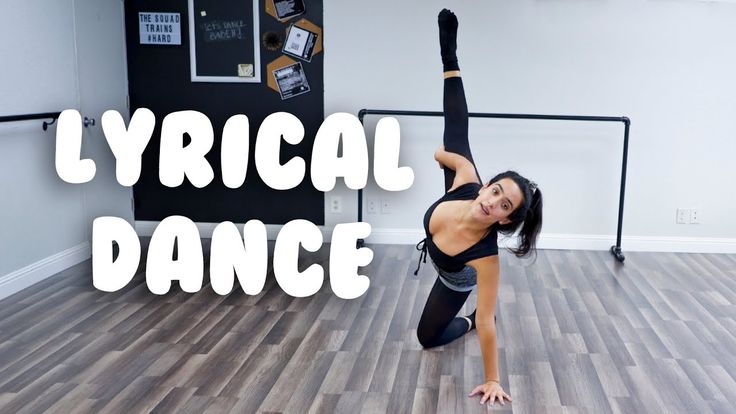 The Bandoneon is a German instrument that looks and feels like a descendant of the accordion and organ. In fact, the instrument was invented to provide organ-like music to church congregations unable to provide a real organ. Like many immigrants to Argentina, bandoneon found its way into its culture and left an indelible mark on it.
The Bandoneon is a German instrument that looks and feels like a descendant of the accordion and organ. In fact, the instrument was invented to provide organ-like music to church congregations unable to provide a real organ. Like many immigrants to Argentina, bandoneon found its way into its culture and left an indelible mark on it.
You may also notice that there are no drums in tango music. The beat is preserved in the bass and lower piano registers with (usually) bandoneons, while the violins and upper piano registers provide captivating rhythms. nine0303 When you start dancing tango, you will most likely be dancing to the most rhythmic music of the 1940s and 1950s, known as the golden age of tango. Music from the late 1930s is good for learning how to hear the beat and feel the beat. As you become more experienced, it becomes very interesting to interpret later music (including modern tango orchestras) with its most modern jazz rhythms.
To develop your understanding of music, you can consult the guide Music for Dancers New to Argentine Tango.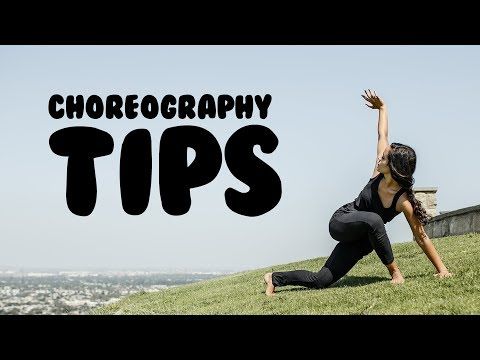 It lists CDs well suited for dancers first learning to hear the rhythm of Argentine tango music. nine0003
It lists CDs well suited for dancers first learning to hear the rhythm of Argentine tango music. nine0003
Milonga (tango dance party)
The pure joy of dancing tango is found in the milonga. Milonga refers to a party where tangos, milongas and waltzes are performed.
What is tanda?
In milonga, music is played in sets called "tandas". Usually three or four songs are played by one orchestra, followed by a "cortina" (curtain) that signals the end of the tanda. If you invite someone to dance and they agree, it is supposed to be an invitation to the whole tanda. nine0303 Cortinas are interesting little details in milonga. Cortina is unique to every DJ. Some will choose one cortina for the evening, and some will use a different one for each tanda. Some are humorous; some get stuck in the ears; some are just beautiful music. In any case, cortina is supposed to be a piece of music that people know not to dance. This is a signal for you to smile, say thank you and (possibly) change partners. nine0003
This is a signal for you to smile, say thank you and (possibly) change partners. nine0003
How to ask someone to dance
In Argentina, men invite women to dance with a look - a certain look, a movement of the head towards the dance floor, or a smile that says, "would you like to dance with me?" This can happen across the room if the eye is caught. If a woman wants to take a dance with a man, she smiles back, and (most importantly) keeps looking at him as he approaches her. The slightest glance to the side is usually interpreted as a signal: "I changed my mind and don't want to dance." This system is wonderful, but full of pitfalls. What if the inviter is looking at the woman behind you? Did you really see "yes", or maybe "maybe?" nine0303 As we participate in this Argentine art form, the practice of inviting to dance with the gaze is respected to some extent. In many areas of the world, however, you can ask to dance directly or with your best Argentinian look.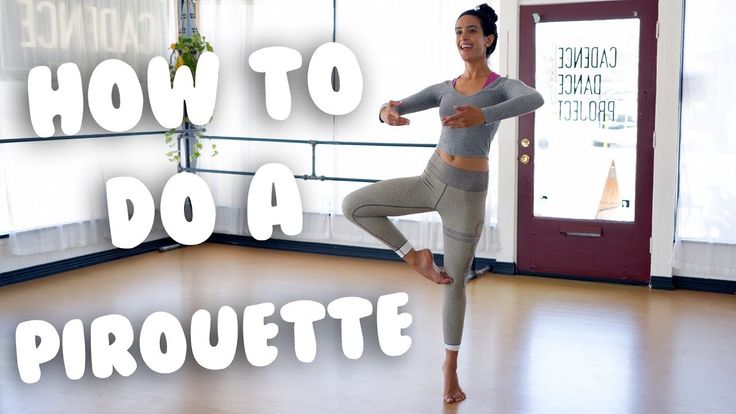 As with dance, practice makes perfect.
As with dance, practice makes perfect.
Accept a dance or say "No thanks"
To accept the dance is enough just to say "yes". You can do it with your own eyes - keep an eye on the people who use the Argentine way, or accept a direct invitation. nine0303 It's also perfectly acceptable to say, "no, thank you." If you accept the dance, remember that it will probably last until the end of the tanda, which could be three or four songs if you start at the beginning. If either one of you decides that one or two dances is enough, anyone can just say "thank you" and start walking off the dance floor. As soon as you say "thank you" to someone in a polite manner, the dance with that person is over.
Milonga beginner
As a beginner, you will either be eager to dance with everyone, or you will hesitate to be noticed as a beginner. If you want to dance, go and dance. Just remember that tangos are danced in lines that keep moving and more experienced dancers tend to stay on the outside. If you hesitate, I can guarantee that everyone in the room was a beginner at one time and understands how the experience gets in the way when you look around and see everyone slip when you only know three moves. Even someone who only dances two weeks longer than you will look like they've been dancing for years. I can't explain it, but it always happens that way. nine0303 The way to become a good dancer is to present and dance. As Woody Allen once said, "98 percent success is in the presentation."
If you hesitate, I can guarantee that everyone in the room was a beginner at one time and understands how the experience gets in the way when you look around and see everyone slip when you only know three moves. Even someone who only dances two weeks longer than you will look like they've been dancing for years. I can't explain it, but it always happens that way. nine0303 The way to become a good dancer is to present and dance. As Woody Allen once said, "98 percent success is in the presentation."
Useful tango terms
The following terms are often used to describe some of the basic elements of tango:
- adornos - jewelry
- amague - fake
- arrastre - drawing
- barrida - sweeping nine0414 boleo - not translated (a specific movement that can be done high or low)
- caminar - basic tango walking template
- cruzada - cross
- corrida - rhythmic run (walking at an accelerated pace)
- enrosque - twisting movement during turning
- freno - brake (blocking foot)
- gancho - hook (movement type)
- giro - turn nine0414 lapiz literally means pencil (to draw a circle on the floor)
- mordida - literally means "bite" (used when feet form a sandwich)
- ocho - "eight" (part of the turn)
- parada - stop
- salida - literally means "exit", but in tango it is the main entrance to the dance
- sacada - offset
For a more complete list of terms, see Ed Loomis' Guide to Tango Terminology. nine0003
nine0003
Beginner Checklist
Here is a list of things a beginner should do:
Leader:
- Know how to ask someone to dance
- Follow the dance line and stay on the line
- Move smoothly
- Keep your balance
- Keeping the rhythm (even at the expense of more bizarre steps)
- Know where you and others are on the floor
- Know how to walk, turn around, stop and hold some decorations
- Know how to break a stride to avoid being hit by another pair
- Know how to connect the basic elements to form a dance
Follower:
- Know how to accept or reject a dance
- Wait for guidance
- Go smoothly and go well in the cross
- Keep your balance nine0414 Keep the beat
- Know about others on the floor
- Know how to walk, turn, stop and do some decorations
Once you master the items on these lists, you will become an average dancer.